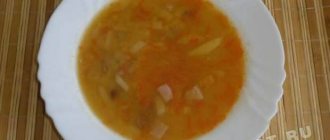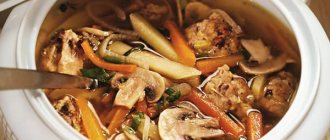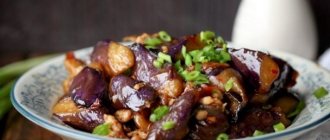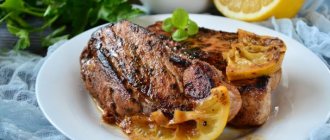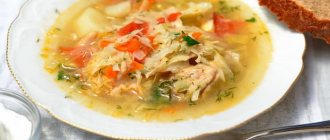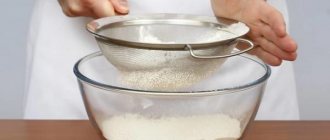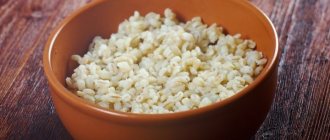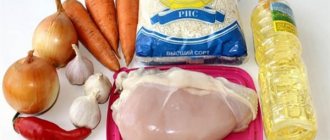Do you want to cook an unusual, but very interesting pilaf? Try pilaf with chickpeas. It can be meaty and lean, but whatever this dish is, it will surprise guests with purely oriental notes. In addition, such pilaf is healthier - chickpeas, or chickpeas, as they are called in the Middle East, help reduce cholesterol in the body.
The legume chickpea differs in preparation from grain rice. Rice takes about 30 minutes or a little more to cook, while chickpeas need at least an hour and a half to be fully cooked. Therefore, the cooking of peas is accelerated by pre-soaking. This is done a day or, in extreme cases, 12 hours before the start of the process.
Chickpeas consist largely of vegetable protein, which, when combined with water, quickly sours the liquid. The water needs to be changed periodically, adding fresh peas. Soak chickpeas at the rate of four glasses of water per glass of peas.
Tip: If you put soaked chickpeas in the refrigerator, the infusion will not sour. This concentrated infusion is useful for washing your face; it has a good effect on the skin, cleansing, rejuvenating and refreshing it.
This pilaf is traditionally prepared in Tashkent, Samarkand and Fergana. If you want to make real Uzbek pilaf with chickpeas, buy high-quality and light peas.
Every region of Central Asia has its own version of pilaf. It depends on the rice grown in the area, because from ancient times the Uzbeks used to prepare the dish the products that they had on hand. Therefore, most often they used devzira (a local variety of rice), Uzbek yellow carrots (there is nothing special about them, except for the lower price and the tradition of mixing two varieties of carrots in pilaf). Plus onions, lamb or beef (the country is predominantly Muslim), as well as some spices. If you see a recipe for real Uzbek pilaf with cumin, dill, and finally, bay leaves and other seasonings, don’t believe it! Uzbeks prepare real pilaf only with a limited number of spices.
For this reason, you should not purchase ready-made pilaf kits, but rather buy them separately:
- cumin;
- barberry;
- red capsicum;
- garlic.
Many people add raisins for sweetness. That's it, nothing else is added.
Now let’s talk about how much food you need to prepare for pilaf with chickpeas. This is about half a kilo of meat, the same amount of carrots and rice, a couple of medium-sized onions, a head of garlic, 150 grams of fat tail, 200 g of dry peas, half a glass of vegetable oil, a pinch of cumin and a handful of barberries.
Preparation.
- Soak the chickpeas in advance.
- Chop the meat and fat tail into small pieces.
- Chop the onion into half rings, cut the carrots into medium strips.
- Heat the oil in a cauldron until it smokes bluishly, put the fat in it and heat until it turns into cracklings. Remove the cracklings.
- Fry the onion until it turns a little brownish.
- Add the meat to the onion and quickly fry, achieving an even, beautiful crust.
Don't be afraid that the onions will overcook or burn. The temperature of the oil will drop sharply when immersing the meat, the onions will simply boil in the meat juice and cook properly.
- Add salt.
- Add carrots and chickpeas soaked the day before to the meat component. Lightly fry, sprinkle with barberry and cumin, pour boiling water so that the water completely covers the zirvak. Cover with a lid and leave to simmer for about 40 minutes. Rule: the longer the zirvak is cooked, the richer and more aromatic the finished dish is.
- Wash and soak rice in salted water. This is an important point - the less starch left in the rice, the greater the likelihood that the pilaf will be crumbly, light, and will not stick together during cooking.
- Put garlic into the prepared zirvak, clearing the head of outer scales, whole hot pepper, raisins, and add rice. Pour boiling water until the cereal is completely covered.
Tip: It is usually recommended to pour water two fingers above the rice. This is not entirely true, because the surface area of the cauldron is not taken into account (there is a difference between the plane of the roasting pan and the frying pan), the degree of soaking of the rice, and finally, the width of the fingers. So it’s better to underfill and add liquid later than to overfill and end up with a sticky mess.
- Place the cauldron on the highest heat, bring to a boil and reduce the heat. After the water has boiled away and the rice is almost ready, rake it to the center, cover the cauldron with a dry towel, place a lid on top, turn off the heat and let the dish rest.
Article on the topic: Folk remedies for teeth whitening
Any dish from Stalik Khankishiev is a culinary work of art. He also cooks very tasty with chickpeas. Like everything that this connoisseur of national cuisine makes, this pilaf has its own characteristics.
First, proportions. Stalik's law - pilaf does not have to have a lot of meat; Uzbeks do not put meat at the forefront. But you need a lot of carrots. But still, usually you take a kilogram of meat, the same amount of rice and carrots, but very little onion - a couple of onions, just to create the aroma and color. The color of pilaf, contrary to popular belief, comes from onions, and not carrots, as many people think. Carrots add a special aroma and sweetness to pilaf. That’s why Stalik advises her to take the hardest, densest one so that it doesn’t become limp during cooking, and not the young one. But it’s your choice of yellow or regular, whichever you find.
Take chickpeas randomly. If you love it, take more; if you’re not sure, half a glass is enough. Stalik calls this pilaf Samarkand, which means that, in addition to chickpeas, it contains large pieces of meat.
Then everything is done like this.
- Soak the washed rice.
- Heat 350 g of fat tail fat in a cauldron, remove the cracklings. If you don't have it, take vegetable oil. Or you can pour oil and use lard for flavor.
- Place one onion in hot fat and fry until almost black. This tradition comes from the times of cottonseed oil, the specific taste and smell of which was captured with onions. Nowadays they do this rather to intentionally flavor the oil.
- Discard the onion. Place coarsely chopped pieces of meat into the oil and at the same time add two onions, chopped into half rings. Fry, stirring, until golden brown. Add salt.
- Place half of the shredded carrots, chickpeas, then barberries, peppers, and carrots again. Sprinkle with cumin.
- Pour in one and a half glasses of water and simmer covered for 20 minutes. Taste the zirvak for salt - it should be quite salty so that it is enough for rice.
- Place the rice removed from the water in the zirvak, add water so that it does not even cover the rice. Cover with a lid and cook over low heat. Stalik’s secret is that water is absorbed into the grain, it swells, and in order for this to happen evenly, the rice is shoveled without touching the grain periodically, holes are made in it to allow steam to escape.
- When the water has evaporated, the rice easily flies off the slotted spoon, you can cover it and turn off the heat.
- When serving, the rice is not mixed, the cereal is placed first, then the carrots and chickpeas, and finally the meat, placed on the edge of the plate in a piece, with a cutting knife served to it.
How and how much to cook soaked chickpeas
There are differences in cooking chickpeas in a regular saucepan and a slow cooker. The general step is to drain the old water and rinse the seeds.
We recommend: All about proper drying of pumpkin seeds
In a saucepan
Pour clean water into the pan and add the soaked chickpeas. The liquid should cover the seeds by at least 3–4 cm. Bring the water to a boil, remove the foam and turn the heat to medium. Cover the pan with a lid. Boil the chickpeas for 30–40 minutes.
Salting chickpeas is allowed no earlier than 10 minutes before the end of cooking. Otherwise, the seed shell will remain strong.
In a slow cooker
Transfer the soaked and washed peas into the device and fill with water so that it covers them by 2-3 cm. Salt, you can add spices (for example, turmeric, red pepper, suneli hops). Set the multicooker to “Stew” mode. Cooking time – 50–60 minutes.
Uzbek pilaf with chickpeas and lamb
- 900 g lamb;
- 35 g raisins;
- 1000 g round rice;
- 10 g barberry;
- 1000 g yellow carrots;
- 220 g chickpeas;
- 3 heads of garlic;
- 210 ml cottonseed oil;
- 10 g cumin;
- 3 onions;
- 80 g fat tail fat;
- 3 g sugar;
- 25 g salt;
- 10 g spices for pilaf.
Time – 2 hours.
Calories – 581.
Preparation:
- Cut the tail fat into small pieces;
- Heat the cottonseed oil in a cauldron, then add the fat in pieces and melt it. A golden film should appear;
- If there is a lamb bone in the meat, you need to add it along with the fat and fry it. You need to pull it out in about ten minutes;
- Peel the onion and cut it into half rings; it should be fried in oil and fat;
- Wash the meat and cut into pieces, not too small. The optimal size is 3 cm. Place it on the onion as soon as it turns golden;
- As soon as a crust appears on the meat, after about fifteen minutes, you should put peeled and cut into strips carrots into the cauldron;
- Fry the carrots until they begin to stick to the meat and are completely soft. You can add salt to it;
- Next, pour a liter of hot water over the meat. The pieces should be barely visible from under the water. Wait until it boils;
- Then put slightly peeled heads of garlic, all the spices, and pre-soaked chickpeas into the cauldron. Cover and simmer for twenty-five minutes;
- Rinse the rice thoroughly and let it soak in water for five hours; the water can be changed;
- After the time has elapsed, remove the garlic, mix the whole mass and place rice on top, distribute it evenly and do not press down in any case;
- Add a little salt and add water so that it covers the rice by about 2 cm. Do not cover the cauldron with a lid;
- After half an hour, when the water is already slightly below the middle of the entire mass, you should collect the rice in a heap, make punctures in it, in which you need to put garlic, and add a little cumin;
- Cover with a lid or plate and cook on the lowest heat for about fifteen minutes. Remove from heat and let sit for at least half an hour;
- Remove the lid, mix the rice with the rest of the mixture, place on a plate, place garlic and meat on top. It is advisable to cut the meat into smaller pieces after cooking.
Barley with stew in a slow cooker is a hearty and fairly simple dish that can be prepared every day.
Diet turkey cutlets are the best dish for baby food. The cutlets will turn out tender and juicy, read our recipes.
Several options for barbecue sauce from classic to spicy with Georgian notes.
Pilaf with chickpeas, prunes and duck breast
- 900 g duck breast;
- 40 g duck fat;
- 140 g chickpeas;
- 35 ml sunflower oil;
- 1000 g oranges;
- 360 g buckwheat;
- 260 g prunes;
- 550 g onions;
- 10 g honey.
Time – 1 hour and 20 minutes.
- Wash the duck, cut off the skin, cut into small pieces;
- Throw the cut skin along with the fat into a hot cauldron to melt;
- When the fat has rendered, use a spoon or slotted spoon to remove the remaining skin;
- Add sunflower oil;
- Cut the peeled onion into quarter rings and throw into the cauldron. Fry until transparent;
- Next add duck meat;
- Squeeze the juice from one orange and mix it with honey, and then add this mass to the meat;
- Cut the prunes into strips and add them to the cauldron fifteen minutes after the meat has been added;
- Add pre-soaked chickpeas and fill everything with water so that it is at least a centimeter higher than the chickpeas themselves. The water must be hot. Add spices for pilaf here;
- Peel the remaining oranges and cut into cubes;
- When the chickpeas are ready, add oranges and top with steamed buckwheat;
- Add a little water if necessary, cover and cook over low heat until fully cooked.
How to properly soak chickpeas for pilaf, soup and hummus
The rules described above work if a person is going to eat chickpeas as a main dish or use them as a side dish. What should those who are planning to cook pilaf, soup or hummus do?
We recommend: How to distinguish edible mushrooms from poisonous ones?
How to soak chickpeas for pilaf?
Do I need to pre-soak chickpeas for pilaf? Yes, but the seeds should be a little tough. After all, they are added to the zirvak at the very beginning, and then stewed for 45-60 minutes. If you use soft chickpeas, they will turn into mush during cooking.
There are two options for soaking chickpeas for pilaf.
- Standard – for 1–2 hours in water at room temperature.
- For a long time - from 12 hours to a day in cold water. The seeds will be larger than with short-term soaking, but will also have a dense structure. To prevent chickpeas from fermenting, place the container in a cool place (for example, a refrigerator) and change the water every 3-4 hours.
There should be 5–6 times more liquid than seeds. For 1 kg of meat, 700–800 g of rice and 150–200 g of chickpeas are required. You can salt the dish during the cooking process.
How to soak chickpeas for soup?
The time for soaking chickpeas for soup depends on the consistency of the finished dish. If you are going to make a thin soup, soak the seeds for 3-4 hours. Then boil for 40 minutes. Add the prepared chickpeas to the dish 10 minutes before the end of cooking.
To prepare the puree soup, soak the seeds for 4-5 hours in water at room temperature. Then cook for another hour.
How to soak chickpeas for hummus?
Hummus is a popular snack in the Middle East. The main ingredients are chickpea puree, sesame paste, vegetable oil and spices. Hummus is rich in plant proteins and Omega-3 fatty acids, so it is often used in vegetarian diets.
Typically, to prepare this dish, chickpeas are soaked overnight in water at room temperature. But 3–4 hours will be enough. Next, the chickpeas are cooked for 1–1.5 hours over high heat.
Press the boiled peas with your fingers. If it mashes easily into puree, it means it is suitable for making hummus.
How to soak chickpeas for pilaf
Chickpeas are peas and, accordingly, are very similar to them. In order to cook these beans faster, they also need to be soaked. The most correct soaking time is four hours. Many believe that this is the most accurate time and not a minute more or less. Because if you soak longer, the chickpeas will absorb excess water, and if less, they won’t soak well enough.
It is better to soak the beans in warm water, because this way the reaction can be accelerated. And after soaking, it is imperative to drain the water and rinse the chickpeas thoroughly with running water.
Vegetarian pilaf with chickpeas
| Ingredients | Quantity |
| sunflower oil - | 220 ml |
| garlic - | 1 head |
| chickpeas - | 110 g |
| carrots - | 3 pcs. |
| basmati or devzir rice - | 370 g |
| bulbs - | 2 pcs. |
| salt - | 10 g |
| soy meat - | 70 g |
| barberry - | 15 g |
| red pepper - | 5 g |
| cumin - | 5 g |
| Cooking time: 70 minutes | Calorie content per 100 grams: 335 Kcal |
Step by step recipe:
- You should soak the chickpeas first. It’s better to do this two days in advance so that it germinates a little - it will turn out more tender. During the day it swells greatly, the water must be changed every six hours;
- Rinse the rice, the devzira variety requires this up to 30 times to remove all the starch;
- Peel the washed carrots, cut them into slices, and then chop them into strips diagonally;
- Cut the peeled onion into half rings;
- Heat the oil in a saucepan (preferably a cauldron);
- Put carrots in it and sauté them, then add onions and salt. Fry the mixture until golden brown;
- Next add soy meat and all seasonings. It is recommended to use asafoetida instead of onions and garlic. Mix;
- Add chickpeas and stir again;
- Place rice on top, under no circumstances mix it with the rest of the mixture, smooth it out;
- Peel the garlic, but do not divide it into cloves. The thin husk can be left. Stick it into the center of the rice;
- Add enough water to cover the rice by about one finger. This must be done carefully so as not to wash out the rice. If necessary, add more salt;
- Cover with a lid and cook on the lowest heat for about forty minutes;
- Remove from heat when ready and stir all ingredients. Remove the garlic and discard.
In a slow cooker
In a slow cooker you get crumbly pilaf, and this is how it is prepared.
Article on the topic: Classic milk corn porridge
- In a multicooker bowl, heat 50 g of oil on frying mode.
- Fry one large onion and then half a kilo of medium-sized chopped meat - beef, lamb, pork.
- Add spices: a couple of teaspoons of barberry, a spoonful of saffron, a little pepper and salt.
- Add chopped carrots and simmer for 15 minutes.
- Place the washed rice, pour in 800 g of water, and cook in pilaf mode for 40 minutes.
Pilaf with chickpeas in a slow cooker
- 1 head of garlic;
- 600 g lamb;
- 3 carrots;
- 120 g chickpeas;
- 430 g parboiled long grain rice;
- 4 onions;
- 15 g salt;
- 10 g spices for pilaf.
Time – 2 hours and 40 minutes.
Calories – 199.
Preparation:
- Soak the chickpeas for two hours in warm water;
- Pour a little sunflower oil into the multicooker bowl and heat it on the “Frying” mode, select 160 Celsius and forty minutes;
- Peel and coarsely grate the carrots;
- Cut the peeled onions into thin feathers;
- Place the onion in oil to fry;
- At this time, cut the meat into small pieces, it is better to choose the hip part;
- When the onion turns golden, add the meat to it, stir and leave for ten minutes;
- If a small crust has already appeared on the meat, it’s time to add carrots and mix too;
- After a few minutes, add the chickpeas; it is advisable to squeeze them out before doing this;
- Mix salt with spices (it is better to take cumin, turmeric, dried tomato, savory, coriander, barberry) and add to carrots;
- Pour hot water into the bowl so that it is 2.5 cm higher than the rest of the mass;
- Close the lid, select the “Extinguishing” mode and leave for one hour;
- Rinse the rice and soak for twenty minutes in salted water;
- After an hour, open the multicooker lid and place rice in an even layer on the meat;
- Then carefully add three glasses of water over the rice, place a head of garlic, peeled from the top husk, in the center, close the lid and leave on the “Stew” mode for another fifty minutes;
- After the time has passed, carefully mix all the ingredients and serve with the garlic in the center of the dish.
Vegetarian pilaf with chickpeas
Even meat lovers enjoy vegetarian pilaf with chickpeas. It is hearty, light, unusual. Lenten pilaf is easy to prepare. The chickpeas are soaked in advance before cooking the rice. Then the carrots are fried in oil into strips. Then onions are added to it. Put spices and chickpeas into the fried onions, then add rice, salt (about one and a half spoons), pour boiling water to cover the rice, and set to cook on low heat. We determine the readiness of pilaf by tapping: if the rice responds with a dull sound when tapped with a slotted spoon, it is ready.
Products:
- 2 glasses of devzira or basmati;
- half a glass of chickpeas;
- 2 onions;
- 3 carrot roots;
- a glass of oil;
- head of garlic (optional);
- cumin, barberry, turmeric, salt.
Sometimes soy meat is added to lean pilaf with chickpeas.
